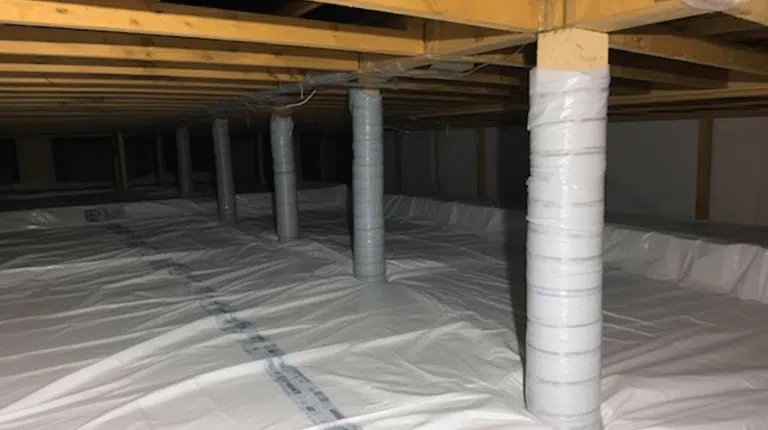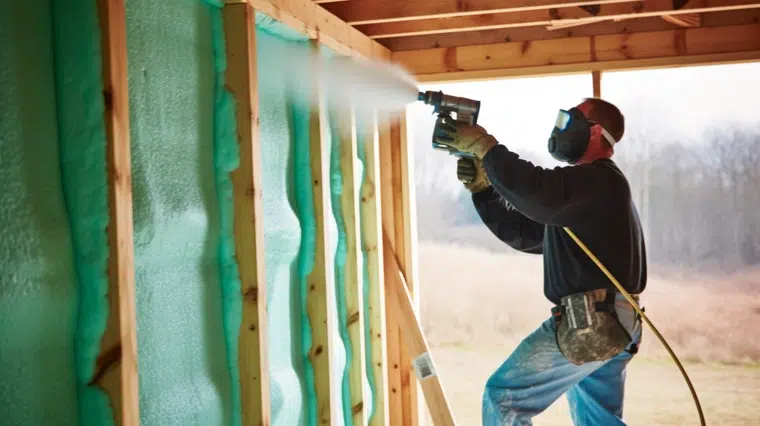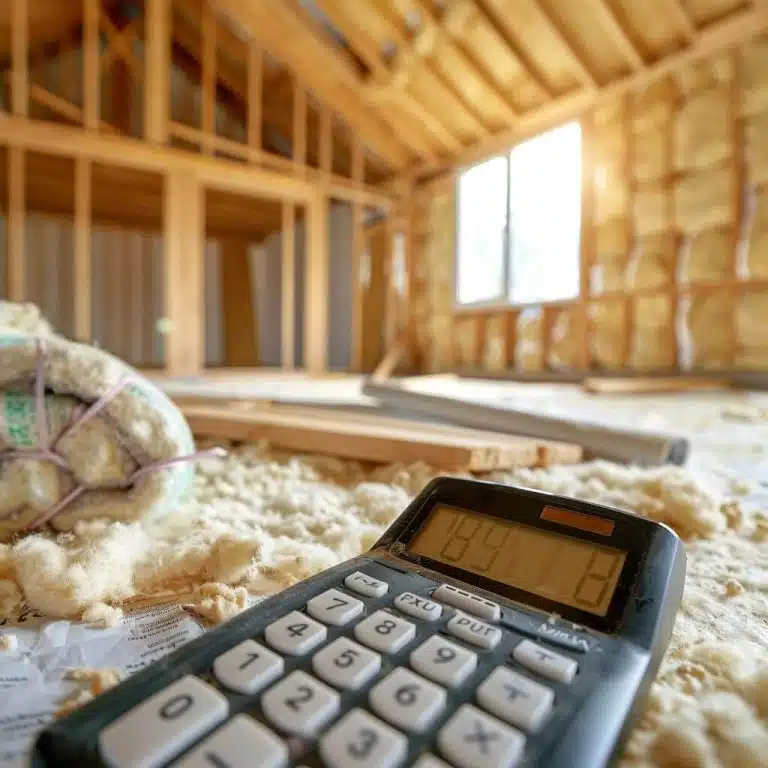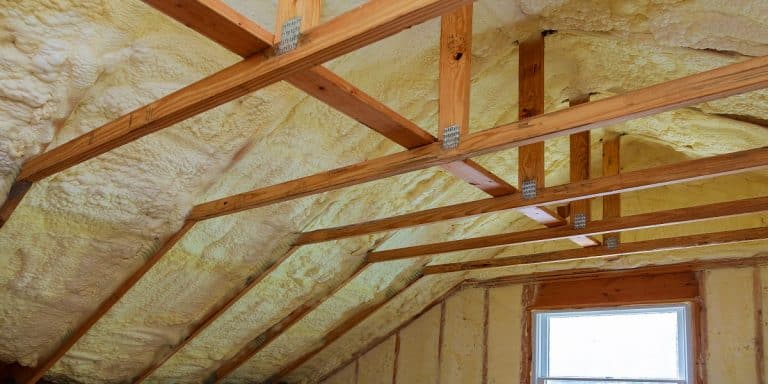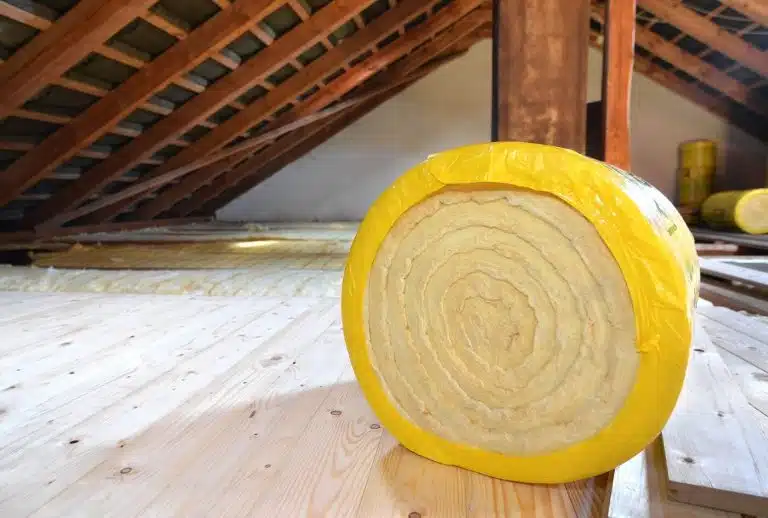Dealing with uninvited furry guests in your attic can be a daunting task. Mice are notorious for causing damage to insulation, electrical wires, and other structural components, not to mention the health risks they pose.
To help you reclaim your attic and ensure a mice-free environment, here are some proven methods for banishing these pesky rodents once and for all.
Key Takeaways
- Sings of a mice infestation include droppings, gnaw marks, nesting materials (like cardboard or insulation), and unusual noises.
- Address the infestation with traps, sealing entry points (¼ inch gaps!), and eliminating attractants like food or nesting materials. Consider repellents, poison (with caution), or professional help for severe cases.
- To prevent future infestations, keep your attic clean and clutter-free. Regularly seal potential entry points and monitor for signs of mice.
How To Get Rid of Mice in Attic Spaces
Set Up Traps
- Place snap traps or humane live-catch traps in your attic to catch the mice. Bait the traps with peanut butter, chocolate, or other high-protein foods that mice find irresistible.
- Check the traps daily and dispose of any captured mice according to local regulations.
- If using live-catch mouse traps, release the mice at least a mile away from your home to prevent re-entry.
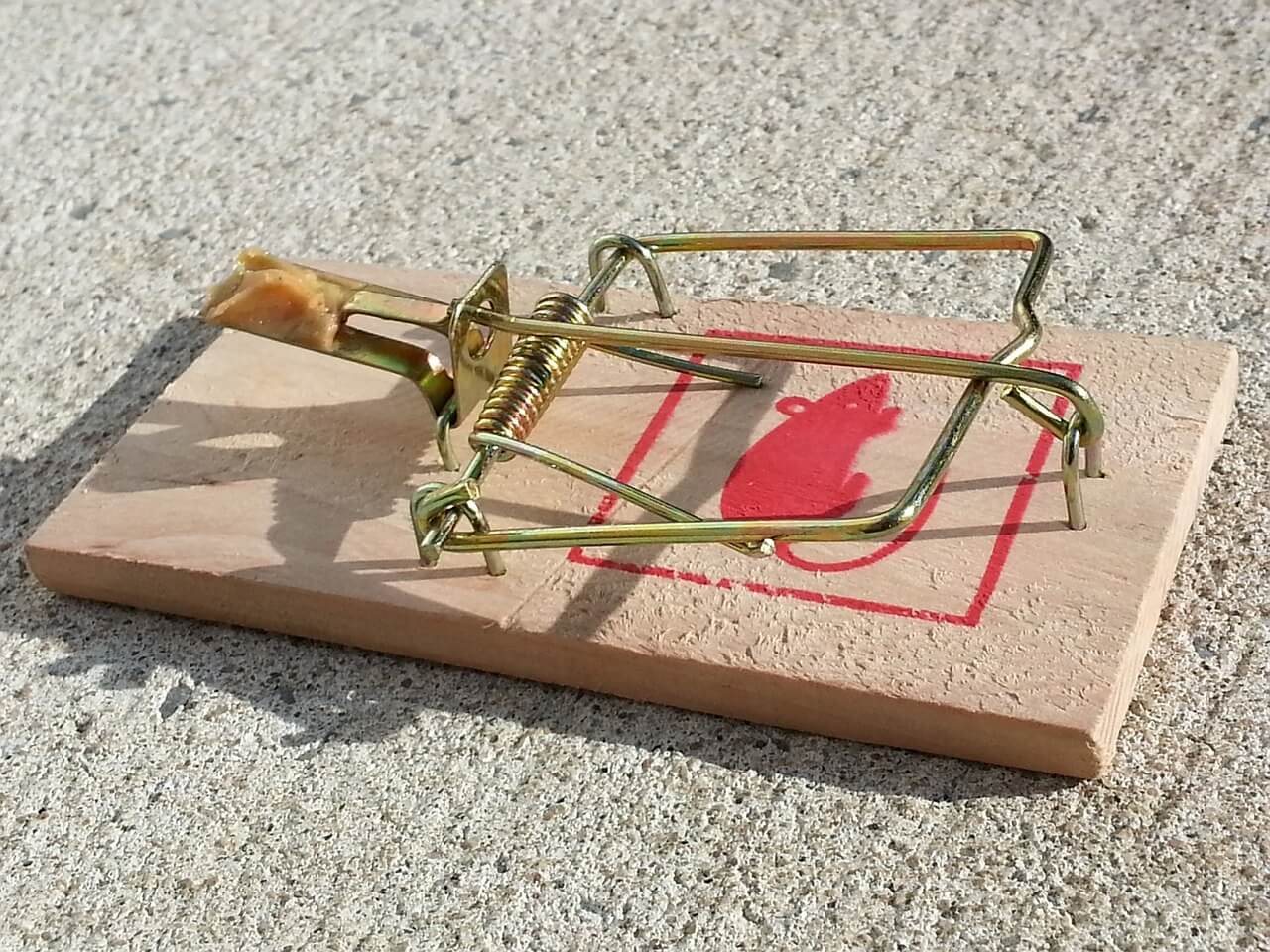
Seal Entry Points and Gaps
Sealing entry points and gaps is a crucial step in preventing mice from entering your attic and establishing a foothold in your home.- To do this, start by conducting a thorough inspection of your home’s exterior, paying special attention to the roof, eaves, soffits, and vents.
- Look for any cracks, holes, or gaps that could serve as entry points for mice. Keep in mind that mice can squeeze through openings as small as 1/4 inch, so even tiny gaps should be addressed.
- You should also check for potential weak points. Some areas of your home may be more susceptible to mouse entry, such as where utility pipes or wires enter the house, roof vents, and gaps around windows or doors. Make sure to inspect these areas carefully.
- If you find any holes, gaps, or cracks, make sure to seal them. To do this, you’ll need materials that are rodent-proof, meaning mice can’t easily chew through them. Some of the best options include steel wool, caulk, and hardware cloth (a type of wire mesh with small, square openings).
- Make sure to periodically check the sealed areas to ensure that the materials are still in place and in good condition. Mice are persistent and may attempt to chew through the barriers you’ve installed, so it’s essential to maintain these preventative measures to keep mice out of your attic.
Use Repellents
Some natural repellents, such as peppermint oil, can be effective in deterring mice.- You can place peppermint oil-soaked cotton balls where you’ve seen mouse activity.
- Make sure to replace the cotton balls every few days, as the scent will fade over time.
Use Poison
Using poison to kill mice in your attic is an option, but it should be considered with caution due to potential risks to humans, pets, and non-target wildlife. If you decide to use poison, follow these guidelines for safety and effectiveness:- Choose an appropriate rodenticide: Select a poison designed specifically for mice, such as anticoagulant rodenticides, which cause internal bleeding and eventually death. These poisons typically require mice to consume the bait multiple times over several days to be effective.
- Use tamper-resistant bait stations: Place the poison in tamper-resistant bait stations designed to prevent kids and pets from accessing the bait. These stations also help protect the bait from moisture and dust, keeping it fresh and more attractive to mice.
- Place bait stations strategically: Position the bait stations in areas where you have observed mouse activity or signs of a rodent infestation, such as mouse droppings or gnaw marks. Be sure to place the stations along walls, as mice tend to travel close to the edges of rooms.
- Monitor and replenish bait: Regularly check the bait stations and replace any consumed bait as needed. Continue monitoring until there is no longer any sign of consumption, which may indicate that the mice population has been controlled.
- Dispose of dead mice: When using poison, be prepared to find dead mice around your home. We normally don’t recommend handling rodent removal on your own, as pest control companies are much better equipped to do it safely. However, if you plan on doing it by yourself, be sure to use gloves to handle and dispose of the carcasses according to local regulations, and clean the attic space area with a disinfectant to minimize the risk of disease transmission.
- Consider potential risks: Keep in mind that using poison poses risks to humans, pets, and non-target wildlife. Additionally, poisoned mice may die in inaccessible places, resulting in unpleasant odors and potential health risks.
Adopt a Cat

Cats are natural predators of mice and can be an effective form of pest control in your attic and the rest of the house. Not only will a cat help to get rid of mice in attic spaces, but their presence can also act as a deterrent to future infestations.
If you are looking for a cat, we encourage you to visit https://www.aspca.org/nyc/aspca-adoption-center/adoptable-cats to not only help yourself but also to lighten somebody’s life!
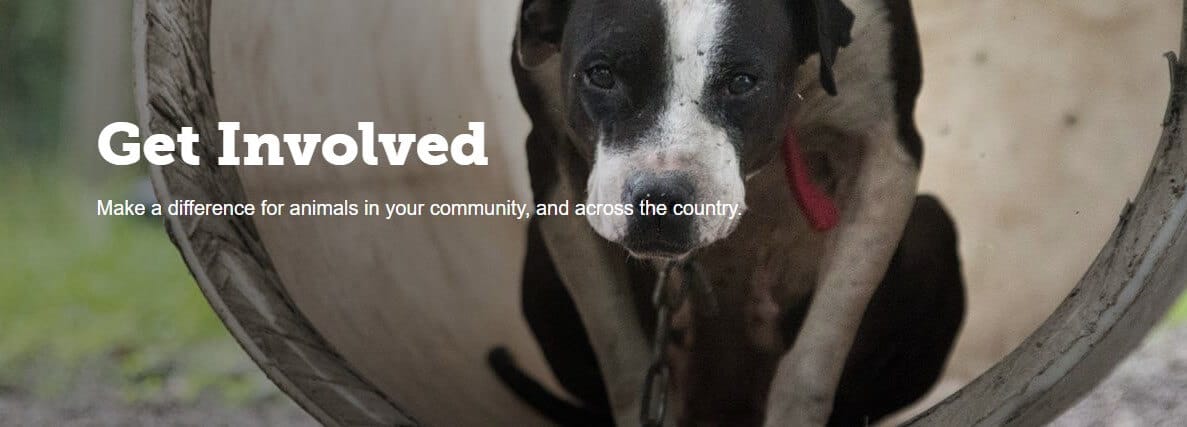
Get a Rat Terrier
While using a rat terrier to get rid of your mice problem might seem like an unorthodox or extreme solution, it’s actually a tried and true method of rodent control.
Rat terriers are small dogs that were bred to hunt and kill rats. They were originally used on farms to keep the rodent population under control. They are incredibly smart and athletic dogs that have a ton of energy. Because of their intelligence and energy, rat terriers are excellent hunting dogs. They can sniff out mice in your home and quickly kill them.
If you have a rodent infestation that’s causing you problems, then using a rat terrier that’s been trained to find and kill the mice can help you get rid of them for good.
Keep the Space Clean and Inspect It Regularly
Keeping your living area clean and inspecting it regularly can help get rid of rodents in attic spaces.
- This means wiping down surfaces, sweeping up crumbs, and keeping food in closed containers. Doing so will make it less attractive for mice to come in search of food.
- Sanitation is also important when it comes to getting rid of mice. This means cleaning up any urine or droppings left by mice, as well as deodorizing the area to discourage them from returning, therefore eliminating a rodent problem once and for all.
Install a Radiant Barrier
Another effective way to get rid of mice is to install a radiant barrier in your home. This is a type of insulation that reflects heat and keeps your home cooler in the summer. This can help to deter mice, which prefer warm environments.
If you already have insulation in your home, it’s important to inspect it regularly and replace it if it’s damaged or old. Old insulation can provide a home for mice and other pests, so replacing it can be an effective way to keep them out.
Call a Pest Control Services
If you’re unable to effectively control the mice infestation on your own, consider hiring a professional pest control company. They have the knowledge, experience, and tools necessary to eliminate the infestation and provide guidance on how to prevent future rodent issues.
Why Mice Live in Attics?
Mice choose to live in attics and crawl spaces for several reasons. These areas often provide the ideal conditions for mice to thrive, such as:
- Shelter and Safety: Attics are typically dark, quiet, and undisturbed, making them perfect hiding places for mice to avoid predators and human interaction. The insulation and stored items in your attic can provide them with materials to build mouse nests and raise their young.
- Warmth: During colder months, attics can be a warm shelter. Mice seek out these warmer spaces to escape the cold. Our homes naturally attract rodents during winter.
- Food Sources: If mice can access food sources in your home, they will be more inclined to live in your attic. They may find their way into your kitchen or pantry to scavenge for food and then retreat to the safety of your attic.
- Easy Access: Mice are excellent climbers and can use nearby trees, utility lines, or the exterior of your home to reach your attic. They can squeeze through small openings, exploiting any cracks or gaps to enter your home.
- Unintentional Attractants: Mice may be attracted to your attic if there is an abundance of materials suitable for nesting, such as cardboard boxes, newspapers, fabrics, or insulation. They may also be drawn to your home by food sources outside, like bird feeders, pet food, or unsecured garbage cans.
How Mice Can Spread Diseases in Your Home
Mice can spread diseases in your home, posing a potential health risk for you and your family. They can transmit diseases both directly and indirectly.
Although not all mice carry diseases, it is essential to take precautions when dealing with a mice infestation to protect yourself and your family from potential health risks.
Ways Mice Can Spread Diseases
| Transmission Method | Description | Example Diseases |
|---|---|---|
| Direct Contact | Handling mice, their droppings, urine, or saliva can expose you to pathogens that cause disease. | Varies |
| Contaminated Food or Water | Mice can contaminate food and water supplies by leaving their droppings or urine behind. Consuming contaminated food or water can lead to illnesses like Salmonella poisoning. | Salmonella poisoning |
| Indirect Contact | Mice can carry fleas, ticks, or mites, which can transmit diseases to humans when they bite. | Lyme disease |
| Airborne Transmission | In some cases, diseases can be transmitted through contaminated airborne particles, such as inhaling dust contaminated with the virus from mice droppings or urine. | Hantavirus Pulmonary Syndrome |
- Wearing gloves and a mask when cleaning up after mice or handling traps.
- Washing hands thoroughly with soap and water after handling any materials that may have come into contact with mice or their waste.
- Disinfecting surfaces and objects that have been in contact with mouse droppings.
- Regularly cleaning and sanitizing food preparation and storage areas to prevent contamination.
- Properly storing food in sealed containers and disposing of trash regularly to deter mice from seeking food sources in your home.
Rodent in Attic – Preventative Measures
It’s one thing to get rid of mice from your attic and home in general, but it’s another thing to ensure they don’t return. We have a whole separate article on how to keep mice out of your crawl space and attic. Be sure to check it out for more details. Meanwhile, here are some tips for preventing mice from making their way into your home.- Keep your attic clutter-free: Make sure to vacuum or sweep it on a regular basis to remove any debris that may have accumulated. Pay special attention to corners and areas where mice may be hiding.
- Mouse-proof the place: Solving your rodent issue hinges upon ensuring your attic space stays inaccessible to rodents. Seal any potential entry points, small holes, and gaps. You can also invest in professional rodent proofing and clean up to avoid the hassle yourself and benefit from safe, mouse-free attic space.
- Monitor for recurrence: Even after successfully eliminating mice from your home, it’s essential to stay vigilant and monitor for any signs of recurrence. This includes regularly checking traps, sealing any new entry points, and keeping your environment clean and clutter-free.
- Educate yourself on mice behavior: Understanding the habits and preferences of mice can help you better protect your home from infestation. For example, mice are nocturnal and prefer to nest in dark, secluded areas. They’re also skilled climbers and can easily access your attic through nearby tree branches or utility lines.
- Ventilation and temperature control: Mice are attracted to warm, humid environments. Ensuring proper ventilation and temperature control in your attic can make it less appealing for mice to establish nests.
Rodent Removal From Attic – Final Remarks
While mice are not as dangerous or destructive as other pests, they can create a significant amount of damage to your home. Furthermore, they can spread disease if you come into contact with their feces or urine. So, if you notice evidence of mice in your attic, use the methods mentioned to eliminate the problem. However, if you’re dealing with a severe attic mouse infestation, you may need to hire a professional exterminator and invest in rodent-proofing. If you need expert help, don’t hesitate to contact Envirosmart Solutions. We have vast experience in rodent proofing and clean up of attic and crawl spaces. Our team can ensure your house is clean, safe, and rodent-free. If you’re not interested in only a temporary solution but want to tackle the mouse problem complexly, give us a call and schedule your service today!Further resources
- Anderson, Jonathan. “How to Keep Mice out of Crawl Space – ESS Company.” EnviroSmart Solution, 10 Jan. 2024, envirosmartsolution.com/blog/how-to-keep-mice-out-of-crawl-space/. Accessed 12 Mar. 2024.
- “How to Get Rid of Mice | 7 Best Ways | Terminix.” www.terminix.com/rodent-control/mice/the-seven-best-ways-to-get-rid-of-mice/.
- “How to Get Rid of Mice: 7 Tips for Disease Prevention.” Healthline, 28 Mar. 2017, www.healthline.com/health/how-to-get-rid-of-mice.


